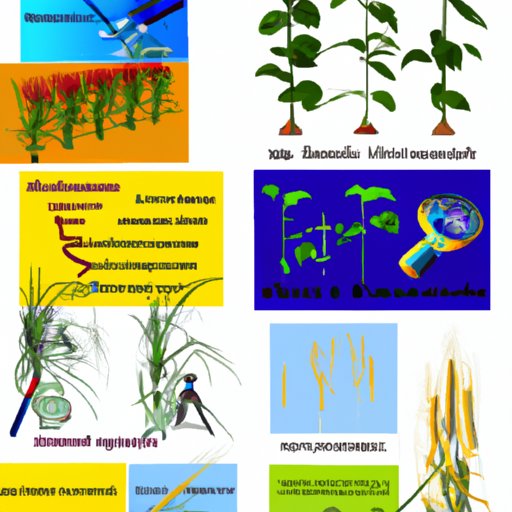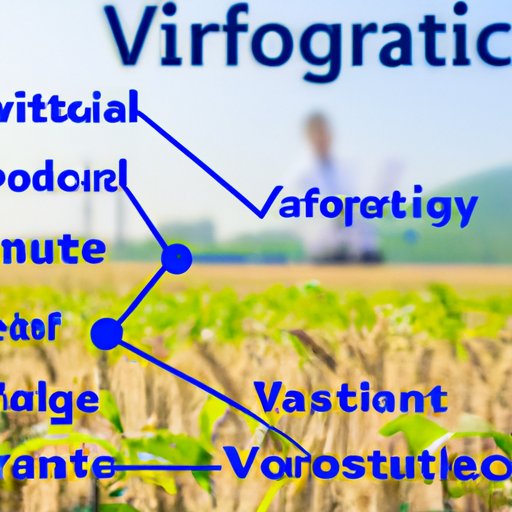I. An Overview of Plant Science: What is it Called?
Plant science, also known as phytology or botany, is a broad field of study that covers all aspects of plant life, from their structure and function, to their growth and development, to their evolution and conservation. The term ‘plant science’ can encompass many different disciplines, including botany, horticulture, agronomy, plant physiology, genetics and genomics, pathology, and biotechnology.
At its core, plant science is the study of plants and their relationship with the environment. According to Dr. Jody Banks, professor of plant sciences at the University of Tennessee, “Plant science is the study of plants, from the smallest microbe to the largest tree, and the interactions between them and their environment.”
It is important to note that plant science is distinct from other fields such as ecology, which focuses on the study of ecosystems; and forestry, which focuses on the management of forests. While these fields may overlap with plant science, they are not the same. Plant science deals specifically with plants and their biology.
II. Exploring the Branches of Plant Science
The field of plant science can be divided into several main branches, each with its own specialized areas of study. These branches include botany, horticulture, agronomy, plant physiology, genetics and genomics, pathology, and biotechnology.
a. Botany and Its Subcategories
Botany is the scientific study of plants and their characteristics. It encompasses a wide range of topics, from the study of plant anatomy and morphology, to the study of plant physiology and biochemistry. Botany is further divided into subcategories such as taxonomy (the classification of plants), plant ecology (the study of plant-environment interactions), and plant pathology (the study of plant diseases).
b. Horticulture and Its Specialties
Horticulture is the science and art of cultivating plants for food, fuel, fiber, and ornamental purposes. It includes the study of plant propagation, cultivation, and post-harvest handling of crops. Horticulture has various specialties such as floriculture (the production of flowers and ornamental plants), pomology (the study of fruit production), and olericulture (the study of vegetable production).
c. Agronomy and Its Role in Crop Production
Agronomy is the science of crop production. It focuses on the application of principles and practices of soil science, plant science, and animal science to crop production. Agronomists are involved in the breeding, selection, and management of crops for optimal yield and quality.

III. The Different Fields of Plant Science and Their Applications
In addition to the branches of plant science discussed above, there are several other fields that are closely related to plant science, each with its own unique applications. These fields include plant physiology, plant genetics and genomics, plant pathology and disease management, and plant breeding and biotechnology.
a. Plant Physiology
Plant physiology is the study of how plants work. It examines the chemical and physical processes within plants, such as photosynthesis, respiration, and nutrient uptake. Plant physiologists use this knowledge to develop new methods of improving crop yields, such as increasing disease resistance or improving water and nutrient use efficiency.
b. Plant Genetics and Genomics
Plant genetics and genomics are the study of the genetic makeup of plants and how it affects their growth and development. Through the use of modern molecular techniques, scientists are able to identify genes that control key traits, such as disease resistance or drought tolerance, and then use this information to develop improved varieties of plants.
c. Plant Pathology and Disease Management
Plant pathology is the study of plant diseases and their causes. Plant pathologists use their knowledge of plant diseases to develop strategies for controlling and managing them, such as using resistant varieties or applying fungicides.
d. Plant Breeding and Biotechnology
Plant breeding is the practice of selecting and crossing plants with desirable traits in order to create new varieties. Plant breeders use traditional methods, such as crossbreeding, as well as modern biotechnological tools, such as gene editing, to create new varieties with desired traits.
IV. Understanding the Science Behind Plant Evolution
Plant evolution is the process by which plants have adapted over time to changing environmental conditions. This process is driven by two main forces: natural selection and adaptation. Natural selection is the process by which certain traits become more common in a population over time, while adaptation occurs when a species evolves to better fit its environment.
The environment plays an important role in the evolution of plants. For example, extreme temperatures, lack of water, or high levels of salt can cause plants to evolve in ways that allow them to survive in difficult conditions. In some cases, plants may even evolve to become more efficient producers of food or medicine, making them beneficial to humans.

V. How Plant Science Contributes to Agriculture and Global Economy
Plant science has a significant impact on agriculture and the global economy. Plant science research has led to the development of new varieties of crops that are more productive and resistant to pests and diseases, resulting in increased crop yields and improved food security. Additionally, advances in plant science have enabled farmers to reduce their reliance on synthetic fertilizers and pesticides, leading to reduced costs and improved environmental sustainability.
According to the U.S. Department of Agriculture, “Advances in plant science have led to higher yields and higher quality products, as well as improved resource use efficiency and environmental stewardship.” These advances have had a positive impact on the global economy, contributing to improved economic growth and stability.
VI. The Role of Plant Science in Sustainability and Environmental Protection
Plant science plays an important role in sustainability and environmental protection. Plant science research has led to the development of new crops that require less water and fertilizer, and are more tolerant of extreme weather conditions, reducing the need for irrigation and fertilizer inputs. Additionally, plant science research has enabled farmers to reduce their reliance on synthetic pesticides and herbicides, reducing their environmental impact.
Furthermore, plant science can help mitigate the effects of climate change. By understanding how plants respond to changes in temperature and precipitation, scientists can develop new varieties of crops that are more resilient to extreme weather events. Additionally, advances in plant science can help improve soil health and protect biodiversity by preserving native plant species.

VII. A Look at the Future of Plant Science
The future of plant science is bright, with many exciting new developments on the horizon. Scientists are continuing to develop new varieties of crops that are more productive and resilient to environmental stressors, as well as new methods of pest and disease control. Additionally, plant science research is uncovering new ways to improve human health and wellbeing, such as through the development of new medicines derived from plants.
Overall, plant science is an ever-evolving field that continues to provide us with valuable insights into the world around us. From understanding the science behind plant evolution to exploring the potential of plant science for improving human health and protecting the environment, plant science will continue to play a vital role in our lives for years to come.
(Note: Is this article not meeting your expectations? Do you have knowledge or insights to share? Unlock new opportunities and expand your reach by joining our authors team. Click Registration to join us and share your expertise with our readers.)
